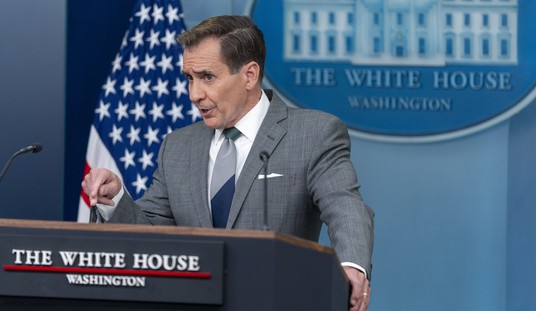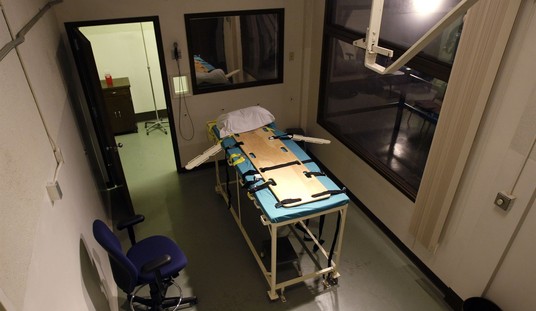It’s probably no shock to anyone that the Pentagon is a budgetary bottomless pit that spends more than most country’s economies on superfluous positions and maintaining a bloated contractor class that knows no equal but having the details laid out to remind us is eye opening nonetheless.
In a report published Monday evening in the Washington Post by Craig Whitlock and Watergate veteran journalist Bob Woodward, the details of how the Pentagon buried an internal study estimating there is $125 billion in wasteful spending in the Defense Department. The study was initially requested by leaders at the Pentagon to boost efficiency, and was “produced last year by the Defense Business Board, a federal advisory panel of corporate executives, and consultants from McKinsey and Company.”
The full article is worth the read, but several aspects are truly stunning and deserve to be highlighted.
The first numbers they hit you with take a moment to digest, beyond the simple fact that the Pentagon spends nearly a quarter of its $580 billion budget on business operations and overhead, is this fact,
“the Defense Department was paying a staggering number of people — 1,014,000 contractors, civilians and uniformed personnel — to fill back-office jobs far from the front lines. That workforce supports 1.3 million troops on active duty, the fewest since 1940.”
That’s four back-office, bureaucratic jobs for every five active duty troops. We hear the DoD crying poor mouth all day long about ‘how are we going to pay our soldiers’ any time there’s mention of cutbacks or a government shutdown. Get rid of that kind of bloated bureaucracy and get back to us.
The budget suggestions provided in the study made a lot of sense for the military, but of course, brass got worried that admitting they were wasting so much money would mean more budget cuts.
“For the military, the major allure of the study was that it called for reallocating the $125 billion for troops and weapons. Among other options, the savings could have paid a large portion of the bill to rebuild the nation’s aging nuclear arsenal, or the operating expenses for 50 Army brigades.
But some Pentagon leaders said they fretted that by spotlighting so much waste, the study would undermine their repeated public assertions that years of budget austerity had left the armed forces starved of funds. Instead of providing more money, they said, they worried Congress and the White House might decide to cut deeper.”
Upon receiving these suggestions, the Deputy Defense Secretary, Robert O. Work, changed his tune after initially commissioning the study to be done. Citing the change in focus from Chuck Hagel as Defense Secretary to Ashton Carter.
“he dismissed the $125 billion savings proposal as “unrealistic” and said the business executives had failed to grasp basic obstacles to restructuring the public sector.
Work said the board fundamentally misunderstood how difficult it is to eliminate federal civil service jobs — members of Congress, he added, love having them in their districts — or to renegotiate defense contracts.
When in Rome, or NoVa (Northern Virginia) as it were, I suppose. The article goes on to give a reason for why these kinds of changes are so difficult to follow through in changing and in part why they persist,
“Because we turn over our secretaries and deputy secretaries so often, the bureaucracy just waits things out,” said Dov Zakheim, who served as Pentagon comptroller under President George W. Bush. “You can’t do it at the tail end of an administration. It’s not going to work. Either you leave the starting block with a very clear program, or you’re not going to get it done.”
This is not unsurprising or a revelation, but it does speak to how the Pentagon has gotten to its bloated state. With the study and recommendations already being completed and a new administration coming in with General James Mattis as Trump’s nominee to head the Defense Department, we can only hope Mattis uses the information the Pentagon already spent over $2 million to have prepared.
So wherein lies the problem and how was the number estimated at $125 billion in waste?
The consultants hired to help conduct the study from McKinsey were shocked to find out how much money the Pentagon was spending on business operations. At $134 billion it was fifty percent more than they had originally estimated.
Almost half of the Pentagon’s back-office personnel — 457,000 full-time employees — were assigned to logistics or supply-chain jobs. That alone exceeded the size of United Parcel Service’s global workforce.
At the low end, just by renegotiating service contracts and hiring less-expensive workers, the Pentagon could save $75 billion over five years. At the high end, by adopting more aggressive productivity targets, it could save twice as much.
After a discussion, the full board voted to recommend a middle option: to save $125 billion over five years.
For all the argument by Work and the Pentagon’s acting deputy chief management officer, David Tillotson III, that the Board chose options that were too aggressive, it looks as though they actually chose the moderate value of their estimates that would maximize efficiency and reduce waste.
The number of actual back-office jobs is coupled with the number of defense contractors that gets the Pentagon to the staggering numbers we see in the report.
“…the Army employed 199,661 full-time contractors, according to a confidential McKinsey report obtained by The Post. That alone exceeded the combined civil workforce for the Departments of State, Agriculture, Commerce, Education, Energy, and Housing and Urban Development.
The average cost to the Army for each contractor that year: $189,188, including salary, benefits and other expenses.
The Navy was not much better. It had 197,093 contractors on its payroll. On average, each cost $170,865.
In comparison, the Air Force had 122,470 contractors. Each cost, on average, $186,142.
After the $125 billion plan was rendered lifeless, Tillotson said,
“They, perhaps, underestimated the degree of difficulty we have in doing something that in the commercial sector would seem to be very easy to do.”
Yet he acknowledged that its overall strategy for scaling back the bureaucracy was sound and that, given more time, it would be possible to realize huge savings.
“If we had a longer timeline, yes, it would be a reasonable approach,” he said. “You might get there eventually.”
All of which they knew before they commissioned the internal study. It makes one wonder if they ever planned on making the changes suggested by the Defense Business Board in the end if they weren’t willing to take on the work they knew implementing such efficiencies would entail in the first place.
McKinley and Woodward do note that the Pentagon is “adopting some of the study’s recommendations on a smaller scale and estimated it will save $30 billion by 2020. Many of the programs he cited, however, have been on the drawing board for years or were unrelated to the Defense Business Board’s research.”
I guess that answers that.













Join the conversation as a VIP Member